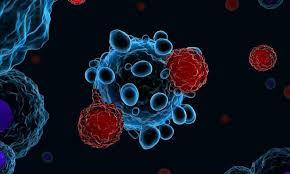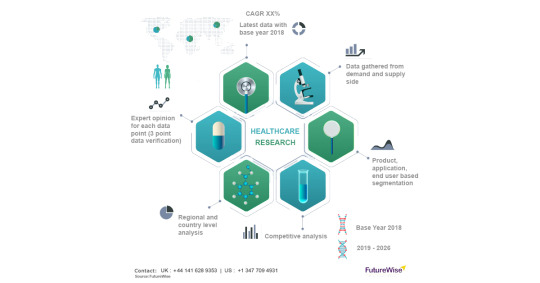#immuno-oncology
Text
How do you beat cancer in a game of chess?
Use checkmate inhibitors.
4 notes
·
View notes
Text
Next-Gen Immuno-Oncology Conference - West Coast Edition
Join us at the MarketsandMarkets Next-Gen Immuno-Oncology Conference - West Coast Edition, the premier gathering of leading experts and professionals in the field of immuno-oncology. Taking place on the 8th - 9th February 2024 in San Diego, USA, this conference is a must-attend event for anyone passionate about shaping the future of cancer treatment.
The Immuno-Oncology Conference brings together renowned researchers, clinicians, industry leaders, and policy makers to explore the latest advancements and breakthroughs in immuno-oncology. With a focus on next-generation approaches and cutting-edge innovations, the conference provides a platform for networking, knowledge exchange, and collaboration.
Join us as a Speaker @ https://events.marketsandmarkets.com/next-gen-immuno-oncology-conference-san-diego/speaker-enquiry
0 notes
Text
A CLOSER LOOK AT THE NEXT WAVE OF IMMUNO-ONCOLOGY

One of the most exciting and rapidly advancing areas of medical research today is immuno-oncology (IO). By leveraging our body’s immune system to fight cancer, this field has already saved countless lives and continues to produce new results every day.
Over the last couple of years, we’ve seen incredible breakthroughs in the world of immuno-oncology. Now, more than ever clinicians can diagnose and treat certain forms of cancer with greater accuracy and efficacy. But what’s coming next?
In this blog post, we’ll dive deeper into the advances being made in immuno-oncology, and the challenges that this field must address in the years to come.
Immuno-oncology and its current landscape
Immuno-oncology (IO) is a field of cancer research and treatment that focuses on using the body’s immune system to fight cancer. The immune system is a complex network of cells, tissues, and organs that work together to defend the body against infections and diseases.
In the case of cancer, the immune system may not recognize cancer cells as foreign or may not be strong enough to eliminate them. Because of that, IO therapies aim to enhance the immune system’s ability to recognize and attack cancer cells.
The current landscape of IO is dynamic and rapidly evolving. IO has become a major area of focus in cancer research, and several new treatments have been developed in recent years. One of the most promising areas of IO research is the use of checkpoint inhibitors. These are drugs that help the immune system recognize and attack cancer cells by blocking certain proteins that inhibit the immune response.
Other promising IO treatments include adoptive cell transfer, which involves removing immune cells from a patient’s body, genetically modifying them to attack cancer cells, and then returning them to the patient’s body. In addition, another area of research is the use of vaccines to stimulate the immune system to attack cancer cells.
Overall, the current IO landscape is characterized by a high degree of innovation and promising developments in the treatment of cancer. Continued research and development in this field are expected to lead to the development of new and more effective IO treatments in the coming years.
What’s coming next in the immuno-oncology field?
The next wave of immuno-oncology (IO) is expected to bring significant advancements in the field of cancer treatment. Here are some of the key areas that are expected to see significant progress in the coming years:
Combination therapies. The use of combination therapies involving IO agents and other cancer treatments, such as chemotherapy, radiation, and targeted therapies, is expected to become more common. These therapies have the potential to improve response rates and overall survival rates for cancer patients.
Personalized medicine. Advances in genomic profiling and biomarker identification are expected to lead to the development of more personalized IO therapies. This will enable oncologists to tailor treatments to the specific genetic and molecular characteristics of individual patients.
Adoptive cell therapies. Adoptive cell therapies involve the use of T cells or other immune cells that are genetically modified to recognize and attack cancer cells. These therapies have shown promising results in early clinical trials and are expected to become more widely available in the coming years.
Neoantigen vaccines. Neoantigens are unique proteins that are expressed on the surface of cancer cells. Neoantigen vaccines are being developed to stimulate the immune system to recognize and attack these specific proteins. These vaccines have the potential to be highly effective and have shown promising results in early clinical trials.
Microbiome-based therapies. Recent research has highlighted the important role that the microbiome plays in regulating the immune system. Microbiome-based therapies are being developed to modulate the microbiome and enhance the effectiveness of IO therapies.
Overall, the next wave of IO is expected to bring significant advancements in the field of cancer treatment. These advancements have the potential to improve outcomes for cancer patients and provide new hope for those affected by this devastating disease.
Challenges that immuno-oncology must face in the coming years
Despite the promising results that immuno-oncology therapies have demonstrated, there are still several challenges that must be addressed in the future to improve the efficacy and accessibility of these treatments. Here are some of these challenges:
Treatment resistance. IO therapies have indeed shown remarkable results in some patients. However, not all patients respond to these treatments, and some may develop resistance over time. For that reason, researchers are working to better understand the mechanisms of treatment resistance and develop strategies to overcome it.
Cost and accessibility. Immuno-oncology therapies can be expensive, and their high cost can limit their accessibility to patients. Efforts are being made to improve the cost-effectiveness of these treatments and expand access to more patients.
Side effects. While IO treatments generally have a favorable safety profile, they can cause side effects, some of which can be severe. Researchers are working to develop strategies to minimize the risk of side effects and improve patient outcomes.
Biomarker identification. Identifying biomarkers that can predict treatment response is crucial to ensure that patients receive the most appropriate and effective treatment. Efforts are being made to identify biomarkers that can help select patients who are most likely to benefit from IO therapies.
Combination therapy optimization. IO therapies are often used in combination with other treatments, such as chemotherapy and radiation therapy, to improve their efficacy. However, optimizing the combination and sequencing of these treatments remains a challenge, and more research is needed to identify the most effective treatment regimens.
While IO has revolutionized the field of cancer treatment, there are still several challenges that need to be addressed. Continued research and collaboration among stakeholders, including researchers, clinicians, policymakers, and patient advocates, will be essential to overcome these challenges.
Conclusion
Overall, the upcoming days of immuno-oncology are looking more and more promising. From the advancements in technology to innovative treatments, we can look forward to a better future for healthcare. And that future will focus on personalized therapies and cures for cancer with significantly fewer side effects than ever before.
As exciting and encouraging as this news is, it’s important to remember that these treatments require access and resources that not everyone will have. And that’s something that needs to be addressed. Immuno-oncology could very well become one of the greatest success stories in medical history, but first, it’s crucial to make sure it becomes accessible for all who need it.
website : https://www.hub-xchange.com/sb/closer-look-at-the-next-wave-of-immuno-oncology/
0 notes
Link
The study of and creation of therapies that use the immune system of the body to combat cancer are known as immuno-oncology.
0 notes
Text
Noninvasive Stomach Power Arousal By using a Recently Produced Wireless Gastrostimulator: A Pilot Pet Research
As many as twenty-one nerves (A new delta-: 76%; C-: 24%) taken care of immediately electric stimulation from the TMJ place throughout pentobarbital-anesthetized test subjects. TMJ electric powered stimulation-induced discharges of your delta/C-neurons had been considerably potentiated throughout current reliant fashion (30-70 nA) simply by iontophoretic using 4-AP to the TRGs. Your spontaneous shooting prices of an delta- as well as C-neurons ended up additionally improved by 4-AP within a current-dependent fashion (30-70 nA). The actual mean limit current that will evoked spontaneous discharges associated with C-neurons was substantially lower than exactly what a delta-neurons. Moreover, the actual imply relative limit current for power activation regarding TMJ-induced result associated with C-TRG nerves was drastically less than a delta-neuron. The comparable shooting rate regarding C-neurons activated by 4-AP-treatment (80 nA) has been considerably above for A delta-neurons. These results claim that the usage of 4-AP increased A new delta/C-TRG neuronal pursuits innervating the particular TMJ throughout vivo and also C-neurons experienced considerably greater sensitivity with regard to 4-AP than A delta-neurons. (Chemical) Next year Elsevier Ireland in europe Ltd and the The japanese Neuroscience Culture. Most protection under the law earmarked.Aim: Our purpose ended up being test: the particular speculation that co-exposure to steer and also fluoride affect the harshness of tooth enamel fluorosis. Materials and methods: Wistar subjects have been allocated within several groups: management, about three teams that acquired drinking water that contain 100 parts per million involving fluoride (Y), 40 ppm involving lead (Pb), as well as A hundred parts per million of F and Thirty parts per million of Pb (P oker + Pb) right from the start associated with gestation. Enamel Fluconazole analysis along with F and also Pb determinations inside enamel, dentine, as well as bone fragments were done within 81-day-old animals. Fluorosis has been quantified by using a brand-new fluorosis index in line with the identification of incisor tooth enamel problems (bright bands as well as white-colored islets, representing hypomineralization, along with cavities) measured as outlined by his or her intensity and amount. Hypomineralization ended up being validated histopathologically by polarizing microscopy and also microradiography. Results got through 2 distracted calibrated examiners (intra along with interexaminer kappa beliefs were Zero.8-10 as well as Zero.Ninety, respectively). Results: Your handle as well as the Pb groupings shown normal enameled surface. The particular P oker + Pb class introduced much more serious teeth enamel defects weighed against the particular Y class (R < 2.0001). Conclusions: This study signifies that steer increase the severity of dental care fluorosis inside mice, recommending that will co-exposure to lead might modify the a higher level fluorosis. (Chemical) 2011 Elsevier Limited. Most rights set-aside.Launch: Community-based participatory analysis (CBPR) provides community viewpoints to look into and also helps translational analysis seeks. There's a need for elevated capability within CBPR but couple of versions exist for the way to secure the progression of community/university partners. Objective: Assess a procedure for market nascent CBPR partnerships. Methods: Layout would be a mixed-methods evaluation using interview, process notes, along with open- and also close-ended review concerns.
#Small Molecule Immuno-Oncology Compound Library#GSK-3 inhibitor#Brefeldin A#10058-F4#Nilotinib#FCCP#Ganciclovir#Sodium dichloroacetate#GSK343#S3I-201#D-Luciferin#BAY-876#KN-93#Ripasudil#Daunorubicin#GW9662#Ripretinib#Letrozole#Vincristine#N-Ethylmaleimide#Bemnifosbuvir#Glumetinib#Clopidogrel#Prednisone#Levonorgestrel#Fluconazole#Baloxavir#Abacavir#Alendronate#Teriflunomide
2 notes
·
View notes
Text
Immuno-Oncology Market Size, Analysis and Forecast 2031
0 notes
Text
In the rapidly growing field of global Immuno-oncology Clinical Trials Market size was valued at USD 8.92 billion in 2023 and is projected to reach USD 28.33 billion by 2032, growing at a CAGR of 13.7% from 2023 to 2032 according to a new report by Nova One Advisor.
0 notes
Text
https://www.merexpression.com/read-blog/140224_immuno-oncology-market-analysis-share-size-and-forecast-2031.html
The Immuno-Oncology Market in 2023 is US$ 58.19 billion, and is expected to reach US$ 271.27 billion by 2031 at a CAGR of 21.22%.
FutureWise Research published a report that analyzes Immuno-Oncology Market trends to predict the market's growth. The report begins with a description of the business environment and explains the commercial summary of the chain structure. Based on the market trends and driving factors presented in the report, clients will be able to plan the roadmap for their products and services taking into account various socio-economic factors.
0 notes
Text
Immuno Oncology
https://www.htfmarketintelligence.com/report/middle-east-immuno-oncology-market
0 notes
Text
The global Immuno Oncology Assays market size was estimated at USD 5.52 billion in 2022 and is expected to surpass around USD 18.08 billion by 2032 and poised to grow at a compound annual growth rate (CAGR) of 12.6% during the forecast period 2023 to 2032.
0 notes
Link
0 notes
Text
India Immuno-Oncology Drugs Market Is Estimated To Witness High Growth Owing To Increasing Adoption of Immunotherapy

The India Immuno-Oncology Drugs Market is estimated to be valued at US$265 Mn in 2022 and is expected to exhibit a CAGR of 13.1% over the forecast period of 2021-2028, as highlighted in a new report published by Coherent Market Insights.
Market Overview:
The India Immuno-Oncology Drugs Market refers to the use of immunotherapy drugs for the treatment of various types of cancer. These drugs work by stimulating the body's immune system to recognize and attack cancer cells. The market is driven by the increasing adoption of immunotherapy drugs due to their effectiveness in treating cancer, especially in advanced stages. Immuno-oncology drugs offer advantages such as targeted therapy, reduced side effects compared to traditional chemotherapy, and improved survival rates. The need for these products arises from the growing prevalence of cancer in India and the need for more effective treatment options.
Market Key Trends:
One key trend in the India Immuno-Oncology Drugs Market is the development of combination therapies. Researchers and pharmaceutical companies are exploring the potential of combining immunotherapy drugs with other treatment modalities, such as chemotherapy or targeted therapy, to enhance their efficacy. For example, the combination of immune checkpoint inhibitors with chemotherapy has shown promising results in clinical trials for various types of cancers. This trend is driven by the need for more effective treatment options and the desire to improve patient outcomes.
PEST Analysis:
Political: The political factors impacting the India Immuno-Oncology Drugs Market include government regulations and policies related to drug approvals, pricing, and reimbursement. The regulatory framework plays a crucial role in determining the accessibility and affordability of these drugs.
Economic: Economic factors influencing the market include healthcare expenditure, insurance coverage, and affordability of immunotherapy drugs. The economic viability of these drugs is an important consideration for patients and healthcare providers.
Social: Social factors such as awareness about cancer and its treatment options, patient preferences, and cultural beliefs impact the adoption of immunotherapy drugs. Education campaigns and initiatives to raise awareness about cancer care can drive market growth.
Technological: Technological advancements in the field of immuno-oncology, such as the development of novel biomarkers and diagnostic tools, are driving the market. The integration of artificial intelligence and machine learning in cancer research and drug development also presents opportunities for market growth.
Key Takeaways:
1: The India Immuno-Oncology Drugs Market Demand is expected to witness high growth, exhibiting a CAGR of 13.1% over the forecast period. This growth is attributed to increasing adoption of immunotherapy in cancer treatment, driven by its effectiveness and advantages over traditional chemotherapy.
2: The fastest growing and dominating region in the India Immuno-Oncology Drugs Market is India due to the high prevalence of cancer and improving healthcare infrastructure. The country has a large patient population seeking advanced treatment options.
3: Key players operating in the India Immuno-Oncology Drugs Market include Amgen Inc., AstraZeneca Plc, Bristol-Myers Squibb, Celgene Corporation, Eli Lilly and Company, Merck & Co., F. Hoffmann-La Roche AG, Johnson & Johnson, Novartis International AG, and AbbVie Inc. These companies invest heavily in research and development to bring innovative immunotherapy drugs to the market.
In conclusion, the India Immuno-Oncology Drugs Market is poised to experience significant growth due to the increasing adoption of immunotherapy for cancer treatment. The development of combination therapies, along with favorable political, economic, social, and technological factors, further contribute to market expansion. Key players play a crucial role in driving innovation and bringing advanced therapies to cancer patients in India and globally.
#Immuno-Oncology Drugs Market#Immuno-Oncology Drugs Market Demand#Immuno-Oncology Drugs Market Insights#Immuno-Oncology Drugs Market Outlook#Immuno-Oncology Drugs Market Value#Immuno-Oncology Drugs Market Share#Immuno-Oncology Drugs Market Forecast#chemotherapy#antibodies#personalized medicine#cancer treatments#Cancer
0 notes
Text
https://www.cienciared.es/blogs/222493/Immuno-Oncology-Market-Size-Analysis-and-Forecast-2031

Immuno-Oncology Market Size, Analysis and Forecast 2031
0 notes